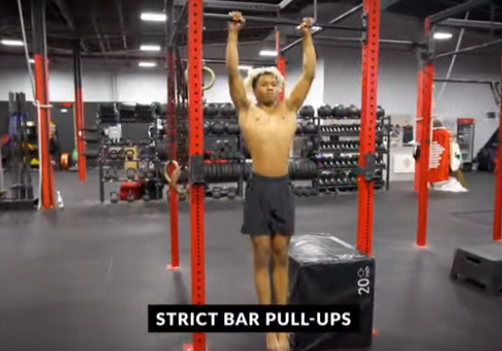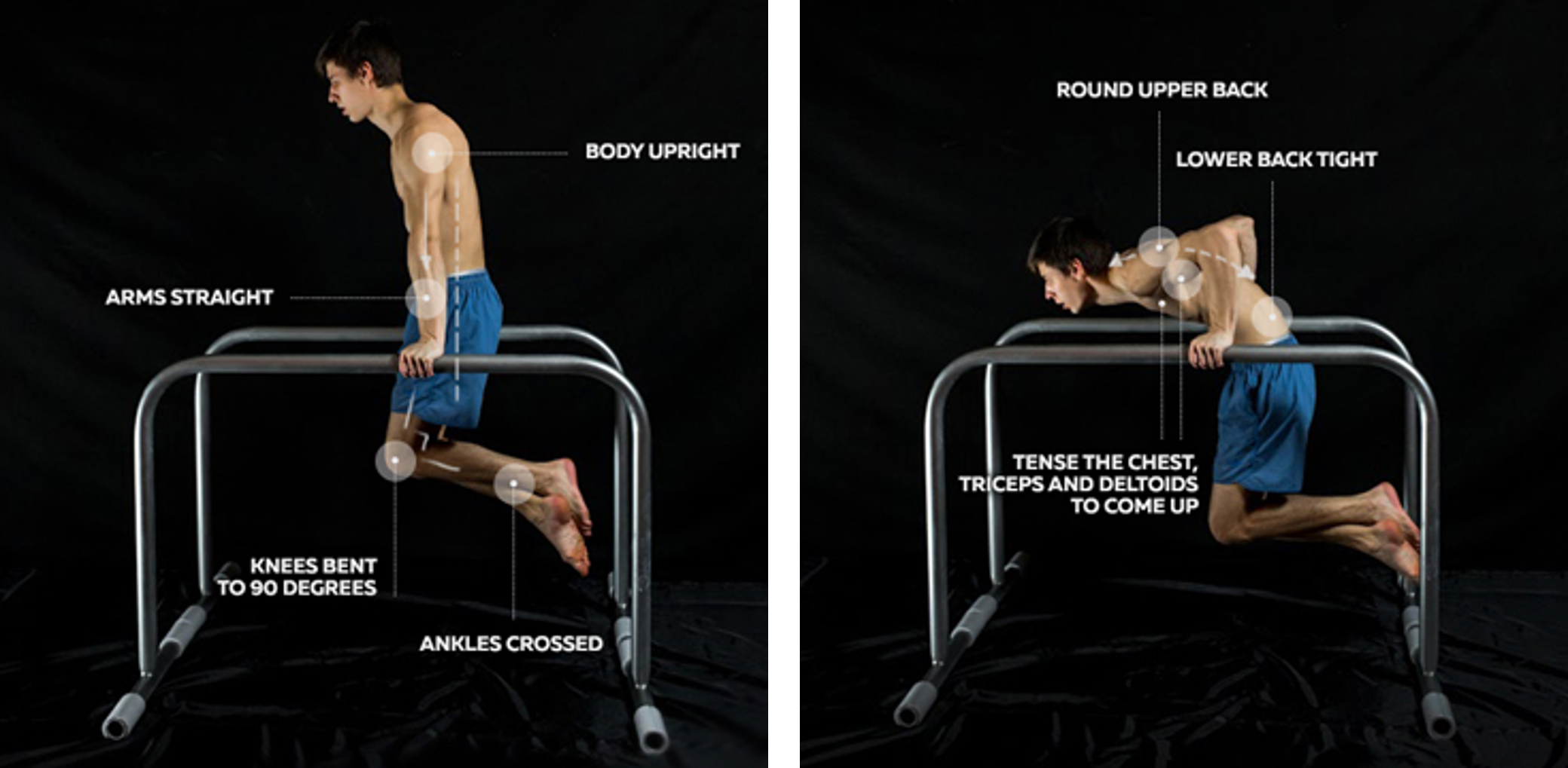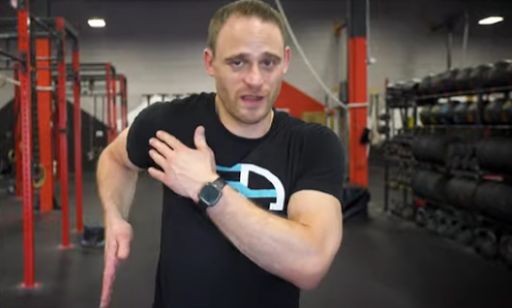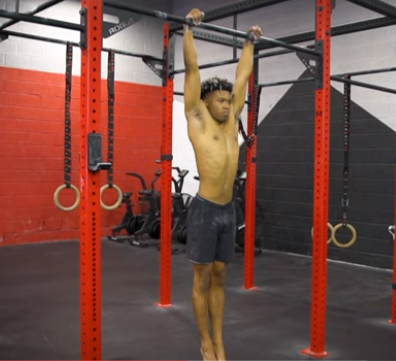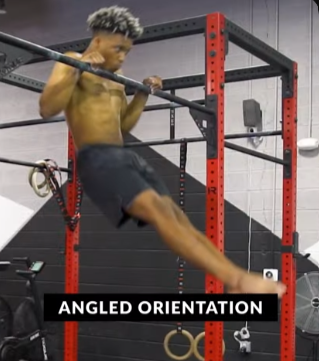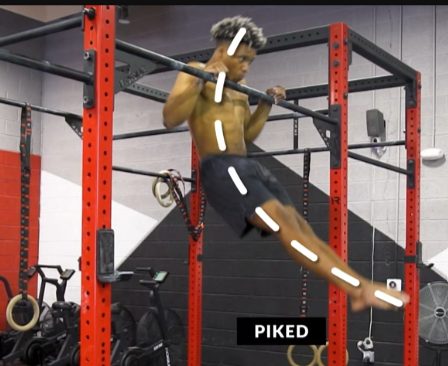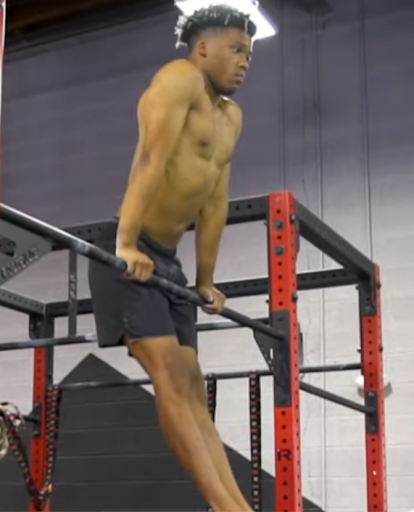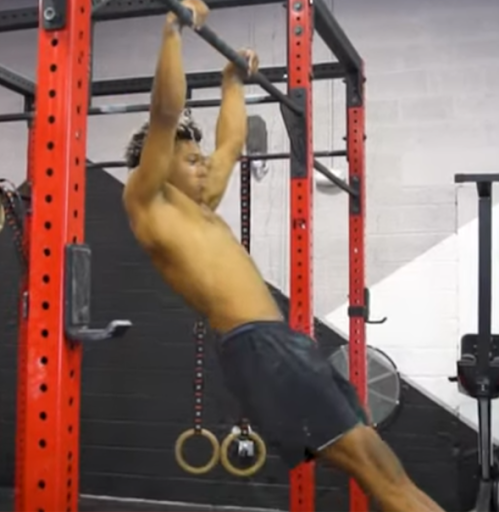Ready to improve your fitness game? The strict bar muscle-up is the ultimate move that separates the strong from the weak.
🙌Strict bar muscle-ups are about pulling yourself up and mastering pure strength, control, and precision. Forget momentum—this is all about raw power and technique. If you’ve ever dreamed of owning this iconic calisthenics skill, you’re in the right place.
The strict bar muscle-up is a coveted skill in calisthenics and fitness. It represents the pinnacle of upper-body strength, control, and technique. Unlike its kipping counterpart, the strict muscle-up relies solely on raw strength and precise execution, making it an actual test of your physical capabilities.
This guide will break down every step to crush your first strict bar muscle-up. Let’s get started and turn that dream into reality!👇
😱Why Master the Strict Bar Muscle-Up?
Before we get into the specifics, it is important to understand why mastering the strict bar muscle-up is satisfying. This exercise boosts your strength and power and enhances muscular endurance, grip strength, and coordination.
Strict bar muscle-ups demand full-body control and awareness. They reduce the risk of injury by eliminating momentum and focusing on a slow, controlled movement. They’re a solid foundation for other advanced calisthenics skills, making them a must-have in your training repertoire.
🎯Prerequisites to Strict Bar Muscle-Up: Are You Ready?
Achieving your first strict bar muscle-up is no small feat—it requires a blend of strength, control, and flexibility. Before you start working on mastering this difficult move, you must first lay a solid foundation. Below are the prerequisites to ensure you’re ready to tackle the strict bar muscle-up.
1. ✔️ Strict Bar Pull-Ups: Building Upper Body Pulling Strength
The strict bar muscle-up begins with a powerful pulling motion, making pull-ups an essential prerequisite. Here’s what you need to focus on:
- Number of Reps: Aim to complete at least five strict pull-ups, but not just any pull-ups—these need to be chest-to-bar pull-ups. Pulling yourself up, your chest should touch or get close to the bar. The goal is to develop the strength to pull higher than just getting your chin above the bar, which is crucial for the muscle-up transition.
- Form and Control: It’s not just about how many pull-ups you can do, but how well you do them. Each rep should be controlled, focusing on maintaining a hollow body position throughout the movement. Avoid using momentum; instead, rely on pure muscle power. At the top of the pull-up, you should be able to hold the position briefly, demonstrating full control over your body.
- Grip Strength: A strong grip is essential, as the strict muscle-up requires maintaining a false grip. This grip, where your palms rest on the bar with your wrists slightly bent, differs from the standard pull-up grip. Practicing pull-ups with a false grip will help you get comfortable with this challenging hold.
Pro Tip: If you’re not yet able to perform chest-to-bar pull-ups, work on strengthening your lats, biceps, and forearms through exercises like lat pulldowns, ring rows, and dead hangs. Incorporate isometric holds at the top of your pull-ups to build the necessary endurance.
2. ✔️ Dips: Developing Pushing Strength and Stability
Once you’ve pulled yourself up, the next phase of the muscle-up is a deep dip, which requires significant pushing strength. Here’s what to focus on:
- Number of Reps: You should be able to perform at least five full-range bar dips. These dips are performed on a straight bar, where you lower your body until your shoulders are below your elbows and then press back up to a locked-arm position.
- Range of Motion: Full-range dips are crucial because the muscle-up involves transitioning from a low dip position. If you can’t dip deep enough, you’ll struggle to press out of the transition phase. Ensure that each dip is performed with a full range of motion, where your shoulders dip below the bar, and you press up to a full lockout.
- Shoulder Stability: Dips on a straight bar require excellent shoulder stability, as your body weight will be supported on a narrow surface. Strengthening your shoulder stabilizers, such as the rotator cuff muscles, will help you maintain control during the dip phase of the muscle-up.
Pro Tip: To build your dip strength, start with parallel bar dips, which are generally easier, and gradually progress to straight bar dips. Incorporate weighted dips into your routine to increase strength and simulate the added resistance you’ll experience during a muscle-up.
3. ✔️ Shoulder Flexibility: Enhancing Mobility for Smooth Transitions
Strict bar muscle-up demands significant shoulder flexibility, particularly during the transition. Here’s what you need to work on:
- Greater Than 90-Degree Flexibility: Your shoulders must comfortably extend beyond 90 degrees. During the muscle-up transition, this range is necessary to move your body from beneath the bar to above. If your shoulders are tight or lack mobility, you may struggle to lean forward and push through the transition phase, which is the most challenging part of the muscle-up.
- Mobility Exercises: To improve shoulder flexibility, incorporate mobility exercises into your routine, such as shoulder dislocates, wall slides, and thoracic spine rotations. These exercises help increase the range of motion in your shoulders, making the transition phase smoother and reducing the risk of injury.
- Strength and Flexibility Balance: It’s not just about flexibility; you also need the strength to control your shoulders through their full range of motion. This strength-flexibility balance is essential for the muscle-up, where you must stabilize your shoulders from pull-up to dip.
Pro Tip: Regularly practice dynamic and static stretches for your shoulders, and consider adding exercises like scapular pull-ups and shoulder rotations with resistance bands to enhance both flexibility and strength.
Not Quite There Yet? The Movement Athlete Has You Covered
If you’re missing any of the mentioned prerequisites, don’t sweat it! Just download The Movement Athlete app and start mastering the fundamentals—pull-ups, dips, and core strength. Building this foundation will set you up for success with muscle-ups and all kinds of upper-body exercises.
And here’s one last thing to consider: You don’t have to master the kipping muscle-up before going for the strict version.
Some athletes find that learning the kipping version helps them familiarize themselves with the movement and coordination needed. It really depends on your goals. Both muscle-up versions can help you prepare for competition, increase your raw strength, or challenge yourself.
💪The Muscles at Work: Breaking Down the Power Behind the Strict Bar Muscle-Up
The strict bar muscle-up isn’t just an upper-body workout—it’s the ultimate test of your body’s strength, coordination, and muscular endurance. To conquer this move, you’ll need the full engagement of multiple muscle groups working together seamlessly. Let’s dive deeper into how each muscle is critical in executing the strict bar muscle-up with precision and control.
1. ✊ Forearms: The Foundation of Your Grip
Your forearms are the unsung heroes of this movement. They play a crucial role in maintaining a strong, stable grip on the bar, especially when using the challenging false grip. The forearm muscles, including the flexor and extensor groups, are responsible for gripping and holding your body weight throughout the entire movement. Without a powerful grip, the muscle-up would collapse before it even began.
- Key Focus: Strengthen your forearms through exercises like farmer’s carries, dead hangs, and wrist curls. A strong grip is essential not just for muscle-up but also for overall upper-body strength.
2. ✊ Biceps: The Power Behind the Pull
The biceps are heavily recruited during the pull-up phase of the muscle-up. These muscles at the front of your upper arm are responsible for bending the elbow and pulling your body upward. The strict bar muscle-up requires your biceps to work overtime as they pull your chest above the bar, demanding maximum strength and endurance.
- Key Focus: Incorporate chin-ups, bicep curls, and isometric holds at the top of the pull-up to build the bicep strength necessary for the muscle-up.
3. ✊ Triceps: The Push for Elevation
While the biceps handle the pull, your triceps take over during the push phase of the muscle-up. Located at the back of your upper arm, the triceps extend the elbow, allowing you to push yourself up and over the bar. This phase resembles a deep bar dip, requiring your triceps to generate significant power to lift your body into the final lockout position.
- Key Focus: Strengthen your triceps with dips, close-grip push-ups, and tricep extensions. Focus on the full range of motion to prepare for the deep dip position in the muscle-up.
4. ✊ Lats: The Wings of Your Lift
Your latissimus dorsi, or lats, are the large muscles that span the width of your back. They are the primary movers during the initial pull-up phase, helping you pull your body upward toward the bar. The lats also play a crucial role in stabilizing your torso and ensuring your body moves smoothly and efficiently during the muscle-up.
- Key Focus: Develop your lats with exercises like pull-ups, lat pulldowns, and rows. Strong lats provide the pulling power necessary to achieve the chest-to-bar position and set up a successful transition.
5. ✊ Deltoids: The Stabilizers and Movers
The deltoids, particularly the anterior (front) and posterior (rear) fibers, are essential for the muscle-up’s pulling and pushing phases. The anterior deltoids assist in the initial pull, while the posterior deltoids help stabilize your shoulder joints and guide the transition as you move over the bar. Together, they ensure that your shoulder remains stable and strong throughout the movement.
- Key Focus: Strengthen your deltoids with exercises like shoulder presses, front raises, and reverse flies. Building shoulder strength and stability is crucial for safely executing the muscle-up.
6. ✊ Pectorals: The Chest Powerhouse
Your pectoral muscles, or pecs, play during the transition and push phases. These chest muscles work alongside the triceps to push your body over the bar. The pecs also help stabilize your shoulders during the transition, ensuring a smooth and controlled movement as you shift from pulling to pushing.
- Key Focus: Boost your pec strength with push-ups, bench presses, and chest flies. Strong pecs are vital for the powerful push needed to complete the muscle-up.
7. ✊ Core: The Control Center
Your rectus abdominis, obliques, and transverse abdominis are the control centers of the muscle-up. A strong core stabilizes your entire body, preventing excessive swinging or losing control during movement. The core also helps maintain proper body alignment, particularly during the transition phase, where your body needs to shift from a pull to a push.
Key Focus: Engage in core-strengthening exercises like planks, hanging leg raises, and hollow body holds. A solid core is essential for maintaining stability and control throughout the muscle-up.
🏆 The Benefits of Strict Bar Muscle-Up
Mastering the strict bar muscle-up is more than just a notch on your fitness belt—it’s a transformative exercise that offers a range of benefits for your upper body strength, coordination, and overall fitness. Let’s explain why incorporating this challenging movement into your routine can take your training to the next level.
1. 🥇 Builds Unmatched Upper Body Strength and Power
The strict bar muscle-up is a powerhouse exercise for building upper-body strength. Combining a pull-up and a dip in one fluid movement targets major muscle groups, such as your lats, biceps, triceps, and shoulders.
Strict bar muscle-ups also require full-range pulling and pushing strength, meaning you’re not just working muscles in isolation but engaging them through their entire range of motion. This results in more comprehensive and functional strength development, improving performance across other exercises and physical activities.
Scientific studies support that full-range motion exercises, like the strict bar muscle-up, lead to greater muscle hypertrophy and strength gains than partial-range exercises. Full-range movements activate more muscle fibers, increasing muscle recruitment and growth.
2. 🥇 Enhances Grip Strength and Coordination
Grip strength is a critical component of the strict bar muscle-up, as maintaining a strong grip throughout the movement is essential for success. The false grip required for this exercise is particularly challenging, demanding a high level of forearm and hand strength. Regularly practicing the strict bar muscle-up can strengthen your grip for this exercise and other lifts and daily activities.
Additionally, the strict bar muscle-up is a complex movement that requires precise coordination between different muscle groups. It challenges your neuromuscular system to work harmoniously, improving overall coordination and body control. This heightened coordination can carry over to other athletic endeavors, making you a more efficient and effective mover.
3. 🥇 Promotes Body Awareness and Shoulder Stability
The strict bar muscle-up demands a high level of control throughout the movement, which helps increase body awareness. As you navigate the pull-up, transition, and dip phases, you become more attuned to how your body moves through space. This improved proprioception—your sense of body position and movement—can enhance your performance in various sports and physical activities.
Moreover, the strict bar muscle-up’s slow, controlled nature significantly emphasizes shoulder stability. Unlike kipping or momentum-based movements, the strict version requires your shoulders to remain stable and controlled, reducing the risk of injury.
4. 🥇 Lower Risk of Injury
One of the standout benefits of the strict bar muscle-up is its lower risk of injury than its kipping counterpart. Because the strict version is performed at a slow tempo with no momentum, there’s less sudden stress placed on your joints. This controlled pace minimizes the chances of experiencing the jarring forces that can occur in more dynamic movements.
By reducing the speed and momentum, the strict bar muscle-up allows you to focus on maintaining proper form and technique, which is crucial for avoiding injuries. This makes it an excellent option for athletes who want to build strength safely or those recovering from injuries looking to ease back into high-intensity training.
5. 🥇 Lays the Foundation for Advanced Calisthenics Skills
Finally, mastering the strict bar muscle-up sets the stage for other advanced calisthenics skills. It provides a solid foundation of strength, control, and technique that can be applied to more complex movements, whether working towards ring muscle-ups, one-arm pull-ups, or even handstand push-ups.
🔥 The Five Phases of the Strict Bar Muscle-Up
Now, let’s break down the strict bar muscle-up into five key phases:
1. ✅ The Hang Position
Start in a dead hang with a false grip. The false grip is crucial—it allows you to transition smoothly from the pull-up to the dip. Grip the bar shoulder-width apart, keep your body tight, and head forward with your legs together. Ensure there’s no momentum or swing in this initial position.
2. ✅ The Pull Phase and Elbow Pathway
From the hang position, engage your shoulders and begin the pull-up. Aim to bring your chest to the bar, not just your chin. Your elbows should move from in front of your body to a position slightly behind, creating an angled orientation as you prepare to transition around the bar.
This phase demands significant pulling strength, especially as you move from the chin-above-bar position to the chest-above-bar position.
3. ✅ The Transition Phase
This is the trickiest part of the muscle-up and where most people get stuck. To move from the chest-to-bar position, you must pike your legs slightly forward while leaning your shoulders over the bar. This counterbalance helps you get on top of the bar. The transition requires exceptional strength and control as you move from a pulling motion into a pushing one.
4. ✅ The Push Phase
Once you’ve successfully transitioned, you’re at the lowest point of a dip. From here, press up to a locked-arm position. Your elbows should track backward, not outward, and you must have sufficient shoulder flexibility to push through this deep range of motion. This phase solidifies the muscle-up by completing the push from the bar’s lowest point to the lockout position.
5. ✅ The Descent
The descent is the reverse of the ascent. Lower yourself back into the dip from the locked-arm position, keeping your elbows tracking backward. Lean back slightly, get your legs in front of the bar to balance, and lower yourself back to a dead hang through the pull-up phase. Maintain the false grip throughout to ensure you can start the next rep without losing your grip.
🧐Frequently Asked Questions
🔎 What equipment do I need to achieve the strict bar muscle-up?
You’ll need access to a sturdy pull-up bar with enough clearance above it to perform muscle-ups safely. Additionally, resistance bands, gymnastic rings, and parallettes may be helpful for some of the progression exercises included in the guide.
🔎 Are there any prerequisites or skills I should have before starting the strict bar muscle-up?
Before starting, it is important to have a solid foundation in pull-ups and dips. Ideally, you should be able to perform at least 5–10 strict pull-ups and dips with good form. If you’re still building up to these numbers, the guide includes preparatory exercises to help you get there.
🔎 How long does it typically take to achieve a strict bar muscle-up?
The time it takes to achieve a strict bar muscle-up varies depending on your strength and skill level. Many can do their first strict bar muscle-up in weeks or months with consistent practice and progressions.
🔎 What are the most common mistakes to avoid when training for a strict bar muscle-up?
Common mistakes include relying too much on momentum, using improper grip, and neglecting the transition phase from pull-up to dip. The guide addresses these issues by offering detailed tips on form, grip, and controlled movement to help you avoid these pitfalls.
⚡️ Conclusion
With practice and focus, you can successfully execute the strict bar muscle-up. Focus on increasing strength and flexibility, following the step-by-step instructions, and practicing consistently. Remember, progress takes time, so be patient with yourself.
Consider using The Movement Athlete app for personalized training plans tailored to your strengths and weaknesses. It tailors exercises to your needs to help you strengthen and perform a perfect bar muscle-up.🙌

